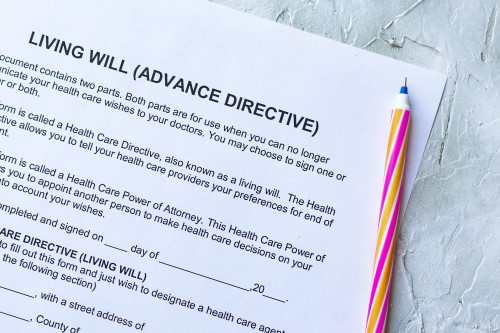In the words of former Supreme Court Justice Benjamin Cardozo, “Every human being of adult years and sound mind has a right to determine what shall be done with his own body.” Health-care advance directives are legal tools that enable you to choose one or more people to make health-care decisions on your behalf when you cannot speak for yourself.
A living will is a type of health-care advance directive. A living will is simply a written instruction spelling out any wishes you have about your treatment or care in the event that you are unable to speak for yourself. A living will says, in effect, “Whoever is deciding, please follow these instructions!” On its own, a living will is very limited―it usually applies only to end-of-life decisions.
A health-care power of attorney (also known as a health-care proxy or medical power of attorney) is another type of advance directive. In a health-care power of attorney, you appoint someone of your choosing to be your authorized agent to make decisions about your health. You can give your agent as much or as little authority as you wish to make health-care decisions; the decisions are not limited to end-of-life decisions. Appointing someone as your agent provides that person with the authority to weigh all the medical facts and circumstances and interpret your wishes accordingly. A health-care power of attorney is broader and more flexible than a living will.
Some lawyers recommend that you create a comprehensive health-care advance directive, which combines the living will and the health-care power of attorney into one document. The document may also include any other directions you wish, including your choices about whether to donate or receive organs and where and how you prefer to be cared for.
When planning for future health-care decisions, it is important to understand that merely completing a health-care advance-directive will do very little good if you skip the most important part of the process: reflecting on what you want and discussing what you want with your family, so-called Advance Care Planning. In order to be effective, the planning process requires that you share your wishes, fears, and priorities with your physician, family, and whomever else you will choose to speak for you when you cannot. Think of the process as a continuing conversation that you will likely need to have more than once. After all, your views may change as you age, and may change dramatically in the event of serious illness. For example, your thinking about end-of-life options would probably be different if you were a healthy 35-year-old than if you were a chronically ill 85-year-old. An advance-directive should be looked at as a work in progress that may be modified at various turning points in your life.
Reviewing Your Advance Directive
Priorities and goals change as your life circumstances change, so review your health-care advance directive with your family and your lawyer periodically. Such review is particularly important when you experience any of so-called Five Ds:
- Decade―when you start a new decade of your life;
- Death―when you experience the death of a loved one;
- Divorce―when you experience a divorce or other major family change;
- Diagnosis―when you are diagnosed with a serious health condition; or
- Decline―when you experience a significant decline or deterioration of an existing health condition, especially when it diminishes your ability to live independently.



コメント